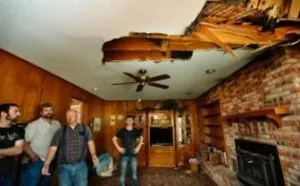Hydraulic fracturing uses high pressure water to break open underground geologic formations – most commonly shale. – containing oil and gas.
Once the shale is fractured, if the fractures are not propped open, they will close again.
So frackers use frack sand to prop open the fractures to allow the oil and gas to be extracted.
They use a lot of sand: up to 10,000 tons of sand per well.
Frack “sand” is actually tiny pieces of quartz- silicon dioxide (SiO2) also known as silica sand. It is not garden variety sand found in your kids sandbox. Because it is special, it is found in only a few places. In the United States, that currently means in the Midwest near the Great Lakes. The Southeast corner of Minnesota and neighboring Wisconsin contain vast deposits of the most desirable highly spherical sand close to the surface.
Alternatives to sand include the use of manufactured ceramic beads and even hemp. Some drillers in western Colorado’s Piceance Basin have experimented with sandless fracking in more naturally brittle formations where the broken portions of shale can themselves act as a proppant.
Overburden Removal
Before mining for frack sand, operators must remove “overburden” – topsoil or subsoil overtop the sand that is mainly composed of clay, silt, loam, or combinations of the three.
Removing the overburden requires scrapers or tracked excavators. After removal, the operator stockpiles the material in man-made earth mounds called berms. These berms can serve as light and noise barriers between the mine and nearby communities.
Excavation
After peeling away and storing the overburden, the operator then must excavate the sand. Excavation may require blasting; depending upon how tightly cemented the target silicates reside within the geological formation.
Processing
In order for the frack sand to effectively hold open the formation fissures, it must have a fairly uniform hardness and shape. To achieve this uniformity, the silicates must undergo further processing at a plant:
- Washing — which involves high pressure spraying of water and dangerous chemicals on to the sand that often leaches in to the ground;
- Drying — depositing the sand in to large rotating drums fed by hot air, powered by either combustion or natural gas;
- Screening and sorting — sorting allows the operator to capture the sands suitable for fracking and dispose or sell the sands better suited for other purposes.
For More Information
- EARTHblog Frack Sand Mining Doesn’t Just Suck, It Blows
- EARTHblog Where do you think the fracking sand comes from?
- EARTHblog Minnesotans Declare Independence from Frac Sand Land
- MPR News Wisconsin Sen. Vinehout proposes legislation to control frac sand mining
- Minnesota DNR Industrial Silica Sand
- Allamakee County Protectors Grassroots Iowa Group
- Sandpoint Times Grassroots Minnesota Group
- WBEZ Behind the fracking boom, a sand mining rush
- Journal Sentinel Wisconsin attorney general levies fine against sand mining company, Dec. 16, 2013
- Wisconsin Center for Investigative Journalism Frac sand mines credited for rising, dropping property values March 30, 2014



